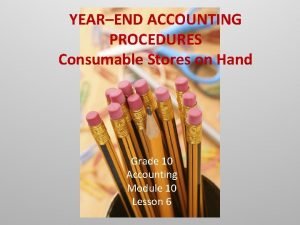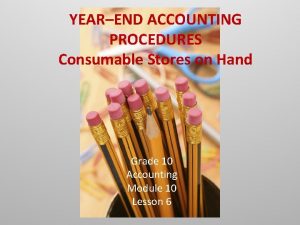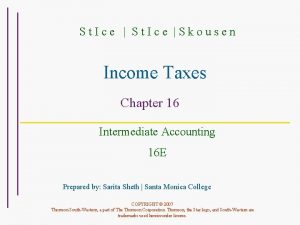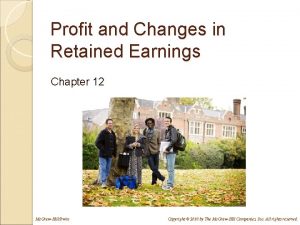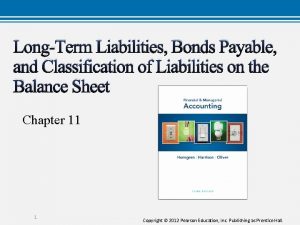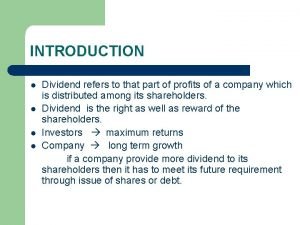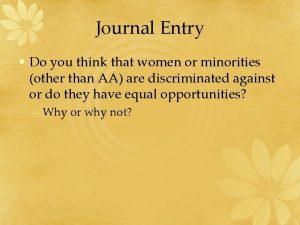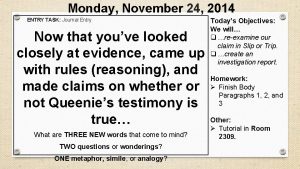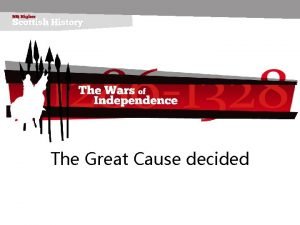Journal Entry 10918 When you think of the


















- Slides: 18

Journal Entry 10/9/18 • When you think of the 1950 s what type of music do you (or musicians) do you think of?

Unit Intro • This unit will be split in two distinct categories • Non Rock n Roll • Rock n Roll • Non Rock n Roll will consist of – • Soloists (Mostly Crooners) • Rock n Roll – • Rise • Doo Wop • Rockabilly • Both categories will include studies of individual artists

Social Climate 1945 -1950 s • What do you remember from US history? • WWII just ended • Period of great inflation and prosper in the US (aside from a brief period of deflation right after the war) • Jazz took a dip during the great depression • Blues were popular, but still not super mainstream • Development of housing communities became the norm • Conformity, does this matter? • Teenagers were beginning to emerge as a completely different group of people. • Included a new set of ideas and desires regarding life • Significantly more leisure and money than in previous generations • Emergence of Cold War, and what I would qualify as the beginning of the major division in political ideology

Music in late 1940 s – Society • Radio was king • Disc jockeys controlled what was played • Disc jockeys were essentially force fed whatever recording studios gave them • Most songs in the late 40 s and early 50 s were recorded on 45 s • 45 s or 78 s which were records that could hold about 3 minutes of music on one side • Recording companies wanted to keep costs down, and they didn’t believe that people would listen to longer songs. • Artists were heavily discouraged (essentially forced) into recording shorter songs as a result of this

Music in late 1940 s – Society • Teenagers after the war were beginning to be targeted by recording companies and ad agencies • First time in history teens had disposable income • Many teens had an allowance or after school jobs • Estimated that people under the age of 21 constituted nearly 1/3 of music sales in the US • Not exclusive to teens, recording industry grossed over $214 million by 1947 • First time since 1921 to surpass $200 million • What do you think the impact the youth in the US had on the music industry (outside of sales)?

Music in late 1940 s – Society • Most pop music between the late 1940 s and early 1950 s consisted of love songs by crooners (occasionally women) accompanied by a swing jazz band

Music in late 1940 s – Society • Why would the US be rooted in what is considered “musical conservatism” during this time frame? • Post war economy expanded rapidly officially ending the Great Depression, men/women were coming home from war, after nearly 20 years of uncertainty and personal sacrifice people simply wanted to settle down • Do you think the Cold War (threat of nuclear war) could have played a role in this? • Families were finally in a place to see the dream produced 20 years before in Gene Austin’s My Blue Heaven

Song Analysis – My Blue Heaven • Listen to the song, and consider how the lyrics represent the following information • A refrain from potentially tumultuously progression • Any other notes on feel and characteristics of the song • Don’t look it up on your phone I will go through the lyrics with you, and we will talk about it.

Song Analysis – My Blue Heaven • Musical composition written by Walter Donaldson, lyrics written by George Whiting in 1924 • Published 1927 • Originally used in the Ziegfeld Follies • Theatrical review (think vaudeville) in 1928 • Became a hit in 1928 when Crooner Gene Austin performed the song • Was on the charts for 26 weeks, number 1 for 13 weeks • Sold over 5 million copies • Look up the lyrics on your phone and answer the following questions • What lyrics highlight a conservative return to what was promised in 1928 in the 1940 s • Does the fact that the song was written and released in 1928 mean anything? • What is the mood/tone of this version of the song • Recorded by Paul Whiteman (sung by Bing Crosby) in 1927 • Recorded by many other artists, including Fats Domino in 1956 • Listen to this version of the song and be prepared to discuss if the new version changes the song

Music in the 40 s/50 s – Rise of the DJ • Disc Jockey (DJ) – Someone who introduces and plays recorded popular music, especially on the radio or at a disco tech • Idea of top 40 programming became popular during the early 50 s for two reasons – • An attempt by radio stations to control the type of music that was being played • A way to make money and create routine amongst the DJs • Top 40 • Stems from Todd Storz in Omaha, Nebraska • Watched kids pumping coins in jukeboxes and playing the same songs on repeat, thought he could apply it to radio • Created a list of the top 40 songs, and started playing them on repeat • Within 5 years this was the standard on radio, and to an extent still is today

Journal Entry 10/11/18 • Song analysis – Once for my Baby (and One More for the Road) • Analyze the lyrics, tone, and mood • Give your personal thoughts as well • Singer: Frank Sinatra • Album: Only the Lonely, released September 1958 • Capital Records • Reached number 1 on the Billboard pop album chart • 120 weeks on the chart • Album reached gold in 1962 • Won the Grammy for the best album cover in 1959

Music in the 40 s/50 s – Rise of the DJ • The rise of the top 40 DJ led to the Payola • Payola – record companies paid DJs to put their records in heavy rotation • How could Payola be used to control music, and encompasses the idea of a conservative music industry? • Used by old school record execs to control the music being played on the radio in an attempt to keep newer styles of music off the radio • Most execs looked down their noses at a teenage audience, and didn’t exploit this new trend • By late 50 s, the practice of payola was under legal scrutiny and essentially ended

Music in the 40 s/50 s – Rise of the DJ • As a result of Payola and a rapid turnover of hit songs in the late 40 s/early 50 s record companies began overproducing records • Most were poorly produced, and poorly written • Record companies in attempts to make money would send as many as 100, 000 copies of records with a guarantee for money back for each copy that didn’t sell

Music in the 40 s/50 s – Technological Advances • Introduction of tape recording • Allowed artists to dub over (called overdubbing) the top of their recordings and create different sound effects • Popularized by Les Paul • 1949 introduction of two-track recorder • Allowed artists to record simultaneous inputs from two microphones • Advent of FM radio stations (late 30 s) took hold during the 1940 s and by 1949 there were nearly as many FM stations as AM stations (700 vs about 900) • FM produces a higher sound quality with a stronger frequency • Advent of television • Led to live music being played and replayed on TV • Created legal issues with paid usage for songs

Late 40 s & Early 50 s - Crooners • Croon(ing) – To hum or sing in a soft, low voice, especially in a sentimental manner • This was only made possible by the advent of the microphone • Previously singers had to have loud powerful voices, but the microphone allowed singers to have a much lower, personal style of singing • Rose to popularity during the 1920 s reaching its peak in the mid/late 40 s through the early 1950 s


Crooner Research • You are going research one of the following crooners 1. 2. 3. 4. 5. 6. 7. 8. 9. 10. 11. 12. 13. 14. 15. 16. 17. 18. 19. 20. 21. 22. 23. Nat King Cole – Caelin L. Perry Como – Faith Bing Cosby – Katelyn R. Dean Martin – Bice Tony Bennet – Anthony Sammy Davis Jr – Luis Harry Connick Jr – Abby Johnny Mathis – Emma Gene Austin – Matt F. Barry White – Cassie Cab Calloway – Declan Louis Prima – Sam Mel Torme – Noah Johnny Mercer - LT Andy Williams – Oss Robert Goulet - Spencer Bobby Darin - Jaielyn Tom Jones – Tyler Englebert Humperdinck – Alec C. Pat Boone – Kourtis Leon Redbone – Manon Michael Buble - Julia Desi Arnaz - Keon • Tomorrow we will have a drawing for each crooner on this list. • In your research you will need to find the following information – • Context on the artist • Who they were, where they were from, etc. • The course of their career • Impact of the artist on music • Impact of the artist on American culture • You will need to use a minimum of three sources • You will have the weekend and time in class on Monday to complete this research • We will culminate this little project with a 3 minute presentation to the class on your artist • Note – Frank Sinatra is not on this list, I am doing Frank, you are doing the other singers

Frank Sinatra • We are going to watch a documentary on Ol’ Blue Eyes • Take notes on the following – • Context – who he was, where he was from, his story, etc. • His impact – • How did Frank impact the music industry? • How did he impact America?
 Dhirubhaism
Dhirubhaism If you think you can you can poem
If you think you can you can poem Consumable stores debit or credit
Consumable stores debit or credit Is consumable stores on hand an expense
Is consumable stores on hand an expense Deferred tax calculation balance sheet approach
Deferred tax calculation balance sheet approach Contingent liability journal entry
Contingent liability journal entry Deferred tax asset journal entry
Deferred tax asset journal entry Units of activity method
Units of activity method Is unearned revenue a liability
Is unearned revenue a liability Small stock dividend journal entry
Small stock dividend journal entry Notes payable journal entry
Notes payable journal entry Double journal entry template
Double journal entry template How many paragraphs in a journal entry
How many paragraphs in a journal entry Sales return journal entry
Sales return journal entry Journal entry for issue of bonus shares
Journal entry for issue of bonus shares Accumulated depreciation journal entry
Accumulated depreciation journal entry Large stock dividend journal entry
Large stock dividend journal entry Statistical journal entry example
Statistical journal entry example Journal closing entries
Journal closing entries


